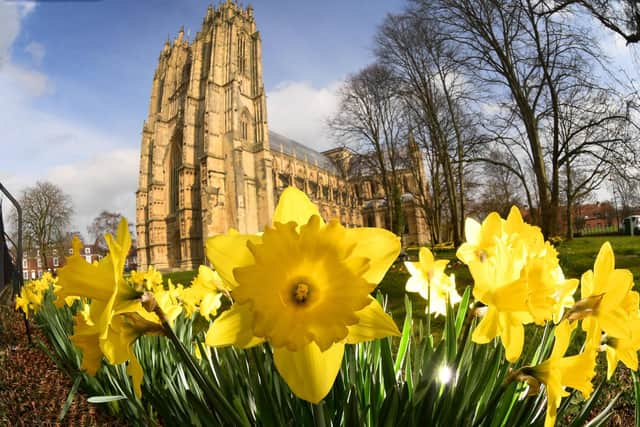How St John and his healing reputation shaped development of Beverley and its Minster
Bright yellow daffodils can be seen in the grounds of the beautiful gothic building, the towers of which are a prominent feature on the skyline of the East Yorkshire market town of Beverley.
One of the finest gothic churches in England, the building was originally founded during the 7th century, though the present Minster was built in the period 1190 to 1420.
Advertisement
Hide AdAdvertisement
Hide AdIt makes use of local materials, the majority of the stone being limestone from Tadcaster, which gives it a light and bright colour not often found in other medieval buildings.


Historic England, the public body that looks after the nation’s historic places, describes how the Minster is named for St John of Beverley, whose tomb drew large numbers of pilgrims to the church.
A history of the building and St John is given on the Beverley Minster website, which claims the market town owes much of its foundation and growth to St John.
During his time as the Bishop of York between 705 and 714, he established a monastery, believed to be at the site of the present Beverley Minster.
Advertisement
Hide AdAdvertisement
Hide AdHe retired to the monastery and when he died in 721, he was buried there.
St John was celebrated for his reported gift of healing and after his death, Beverley became a prestigious pilgrimage destination in the north of England.
A number of medieval kings visited the town in order to pay homage to him.
Though John’s sainthood was not officially recognised until 1037, his reputation attracted pilgrims from far and wide and they helped the monastery to expand and develop, by funding more substantial building work.
Advertisement
Hide AdAdvertisement
Hide AdBut in 1188, what had become a Norman church building on the site was destroyed by a fire, which also ravaged swathes of the town.
Work soon then started on the Beverley Minster we see today, with the eastern part being constructed first.
Support The Yorkshire Post and become a subscriber today. Your subscription will help us to continue to bring quality news to the people of Yorkshire. In return, you'll see fewer ads on site, get free access to our app and receive exclusive members-only offers. Click here to subscribe.
